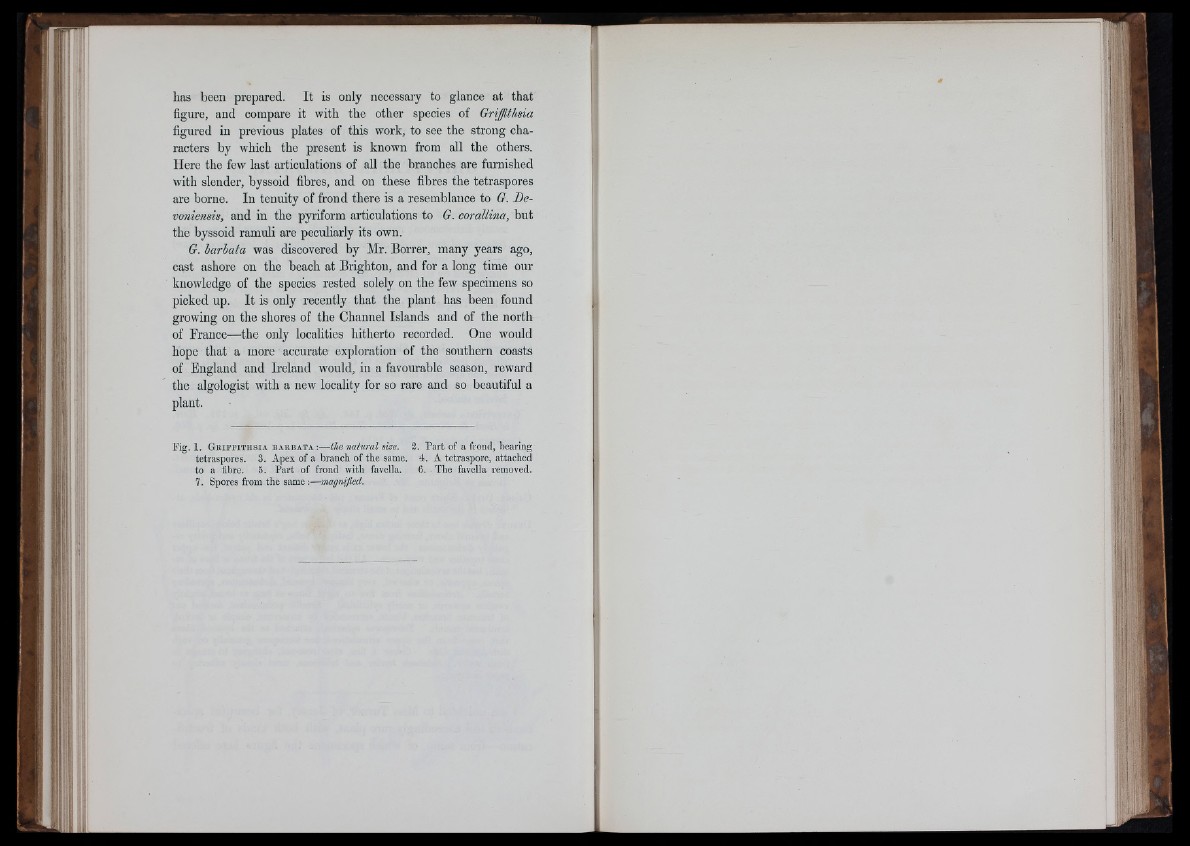
has been prepared. It is only necessary to glance at that
figure, and compare it with the other species of Griffithsia
figured in previous plates of this work, to see the strong characters
by which the present is known from all the others.
Here the few last articulations of all the branches are furnished
with slender, byssoid fibres, and on these fibres the tetraspores
are borne. In tenuity of frond there is a resemblance to G. De-
voniensis, and in the pyriform articulations to G. corallina, but
the byssoid ramuli are peculiarly its own.
G. barbata was discovered by Mr. Borrer, many years ago,
cast ashore on the beach at Brighton, and for a long time our
knowledge of the species rested solely on the few specimens so
picked up. It is only recently that the plant has been found
growing on the shores of the Channel Islands and of the north
of France—the only localities hitherto recorded. One would
hope that a more accurate exploration of the southern coasts
of England and Ireland would, in a favourable season, reward
the algologist with a new locality for so rare and so beautiful a
plant.
1 1 ' '-'.I
III
K ig . 1. G i i i i ’iT T i i s iA B A R B A T A :—the natuTol size. 2. Part of a frond, bearing
tetraspores. 3. Apex of a branch of the same. 4. A tetraspore, attached
to a fibre. 5. Part of frond with favella. 6. The favella removed.
7. Spores from the same:— m